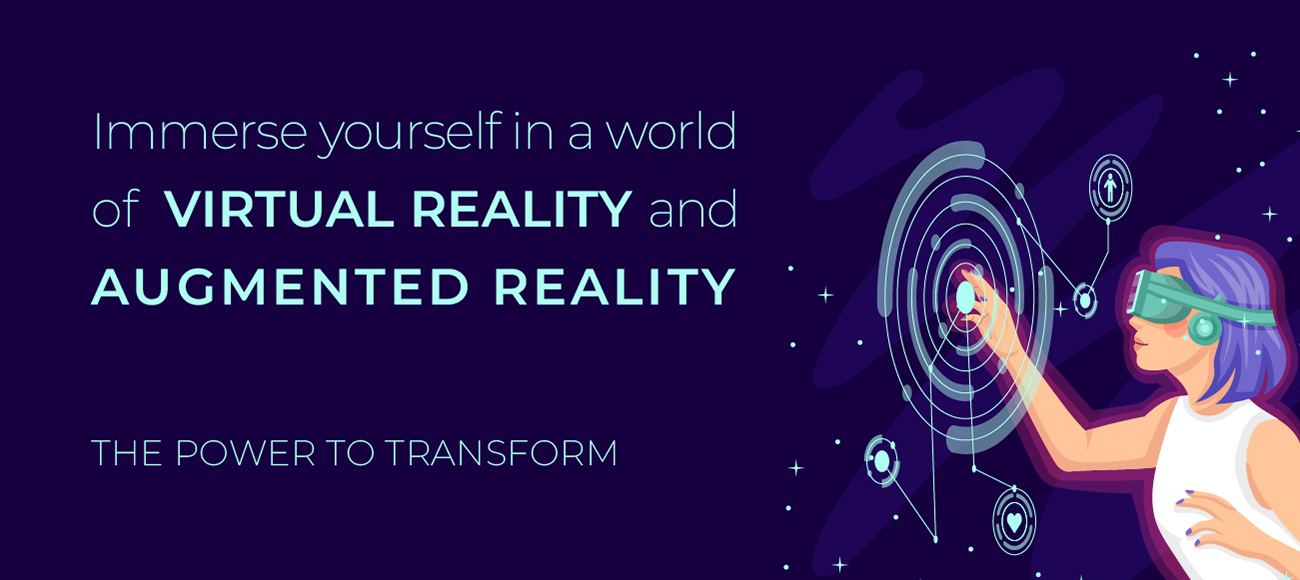
21 Aug The Marvelous Journey of VR and AR
In the ever-evolving world of technology, Virtual Reality (VR) and Augmented Reality (AR) have emerged as groundbreaking innovations that bridge the gap between the digital and physical realms. These immersive technologies have revolutionized various industries, captivating the imagination of users and transforming the way we interact with the world around us. This blog delves into the awe-inspiring world of VR and AR, exploring their distinctive features, applications across industries, and the future they hold.
Unveiling the Essence of Virtual Reality:
Virtual Reality, as the name suggests, immerses users in a simulated environment, transporting them to entirely different worlds. The experience is facilitated through specialized headsets that completely immerse the user’s field of vision, tricking the brain into perceiving the virtual world as real. From gaming and entertainment to education and training, VR offers limitless possibilities.
In the realm of gaming, VR has introduced an entirely new level of engagement, enabling players to step into the shoes of their digital avatars and interact with their virtual surroundings. Beyond gaming, VR is transforming industries like healthcare, architecture, and tourism. Surgeons can now practice complex procedures in a risk-free virtual environment, architects can visualize their designs before construction begins, and travelers can explore destinations before booking their tickets.
Augmented Reality: Enhancing the Real World
Augmented Reality, on the other hand, enhances the real world by overlaying digital information onto our physical surroundings. Unlike VR, which immerses users in a completely virtual environment, AR seamlessly integrates digital elements into the real world, often through smartphone cameras or specialized glasses.
AR gained widespread popularity with the release of Pokémon Go, where players could see and interact with virtual creatures in real-world locations. This technology has since expanded its reach into various sectors. For instance, in education, AR provides interactive learning experiences by overlaying 3D models and information onto textbooks. In retail, AR allows customers to virtually try on clothes or visualize furniture in their homes before making a purchase. Furthermore, AR is revolutionizing industrial sectors, such as manufacturing and maintenance, by providing workers with real-time information and guidance.
The Synergy and Future Prospects:
While VR and AR offer distinct experiences, there is also a growing convergence between the two technologies. Mixed Reality (MR) combines elements of both VR and AR, enabling users to interact with both virtual and physical objects simultaneously. This opens up exciting opportunities for collaboration, training, and design, where users can interact with virtual objects while still maintaining a connection to the real world.
As these technologies continue to evolve, their impact is set to extend far beyond their current applications. VR and AR have the potential to revolutionize remote work, allowing teams to collaborate in virtual environments regardless of geographical boundaries. Additionally, healthcare professionals can use these technologies to provide telemedicine services, bridging the gap between patients and specialists.
The future of VR and AR also holds promise for entertainment, with immersive storytelling experiences that blur the line between fiction and reality. Imagine being able to step into your favorite movie or video game and become an active participant in the narrative.
Conclusion:
Virtual Reality and Augmented Reality have paved the way for incredible advancements, revolutionizing the way we perceive and interact with the world. From gaming and education to healthcare and beyond, these immersive technologies have disrupted multiple industries, offering boundless opportunities for innovation and growth. As VR, AR, and MR continue to evolve, the line between the physical and digital worlds will become increasingly blurred, opening up new frontiers and unlocking the limitless possibilities of human imagination.

Sorry, the comment form is closed at this time.